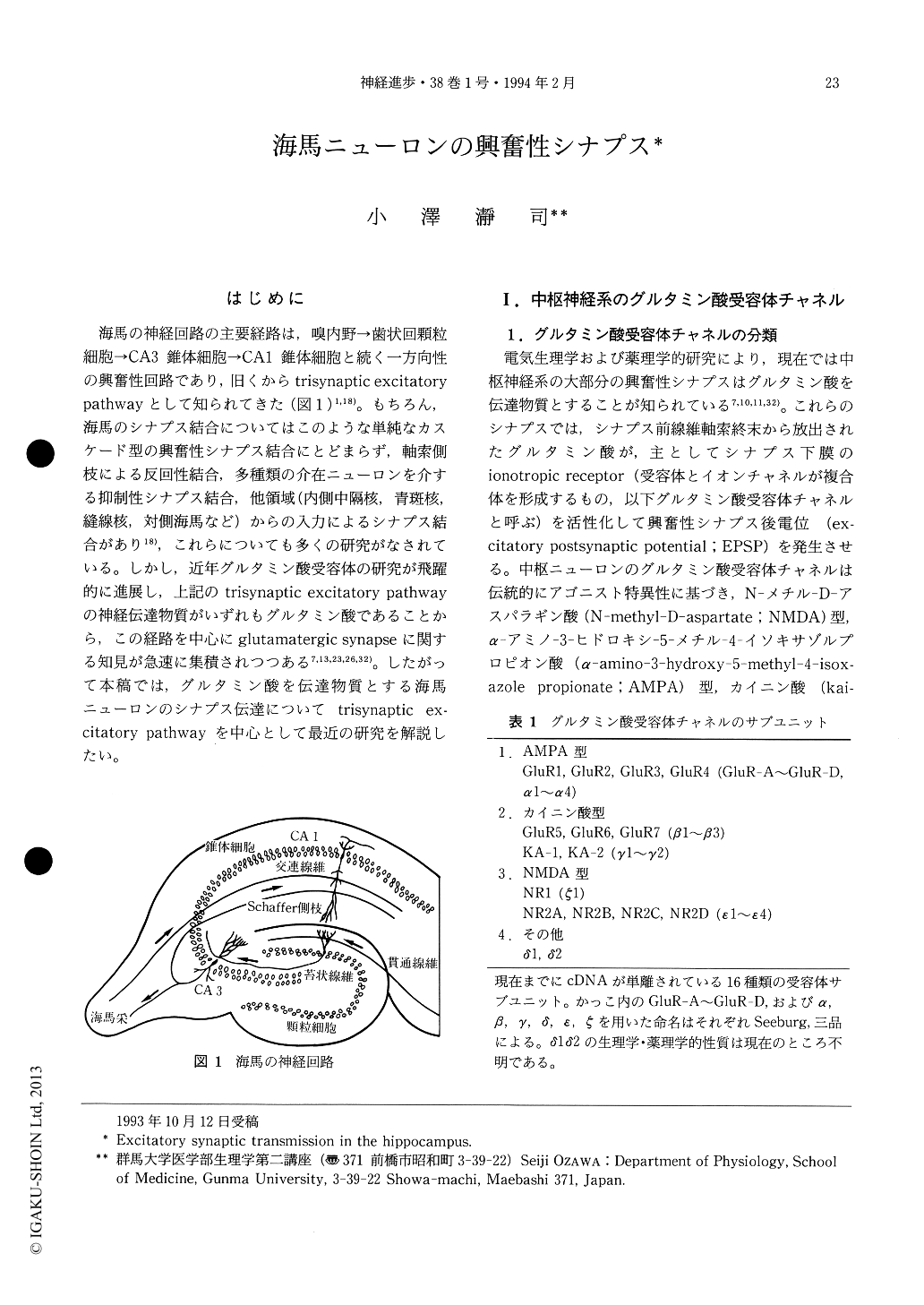Japanese
English
- 有料閲覧
- Abstract 文献概要
- 1ページ目 Look Inside
はじめに
海馬の神経回路の主要経路は,嗅内野→歯状回顆粒細胞→CA3錐体細胞→CA1錐体細胞と続く一方向性の興奮性回路であり,旧くからtrisynaptic excitatorypathwayとして知られてきた(図1)1,18)。もちろん,海馬のシナプス結合についてはこのような単純なカスケード型の興奮性シナプス結合にとどまらず,軸索側枝による反回性結合,多種類の介在ニューロンを介する抑制性シナプス結合,他領域(内側中隔核,青斑核,縫線核,対側海馬など)からの入力によるシナプス結合があり18),これらについても多くの研究がなされている。しかし,近年グルタミン酸受容体の研究が飛躍的に進展し,上記のtrisynaptic excitatory pathwayの神経伝達物質がいずれもグルタミン酸であることから,この経路を中心にglutamatergic synapseに関する知見が急速に集積されつつある7,13,23,26,32)。したがって本稿では,グルタミン酸を伝達物質とする海馬ニューロンのシナプス伝達についてtrisynaptic excitatory pathwayを中心として最近の研究を解説したい。
The hippocampus is an ideal region for studying the synaptic mechanism in the mammalian central nervous system (CNS), since there is a relatively simple geometric arrangement among its neuronal constituents. It is now widely accepted that glutamate is the neurotransmitter at principal excitatory synapses in the hippocampus. The purpose of this review is to introduce recent research on bothelectrophysiological and pharmacological properties of the glutamatergic synapses in the hippocampus.

Copyright © 1994, Igaku-Shoin Ltd. All rights reserved.


